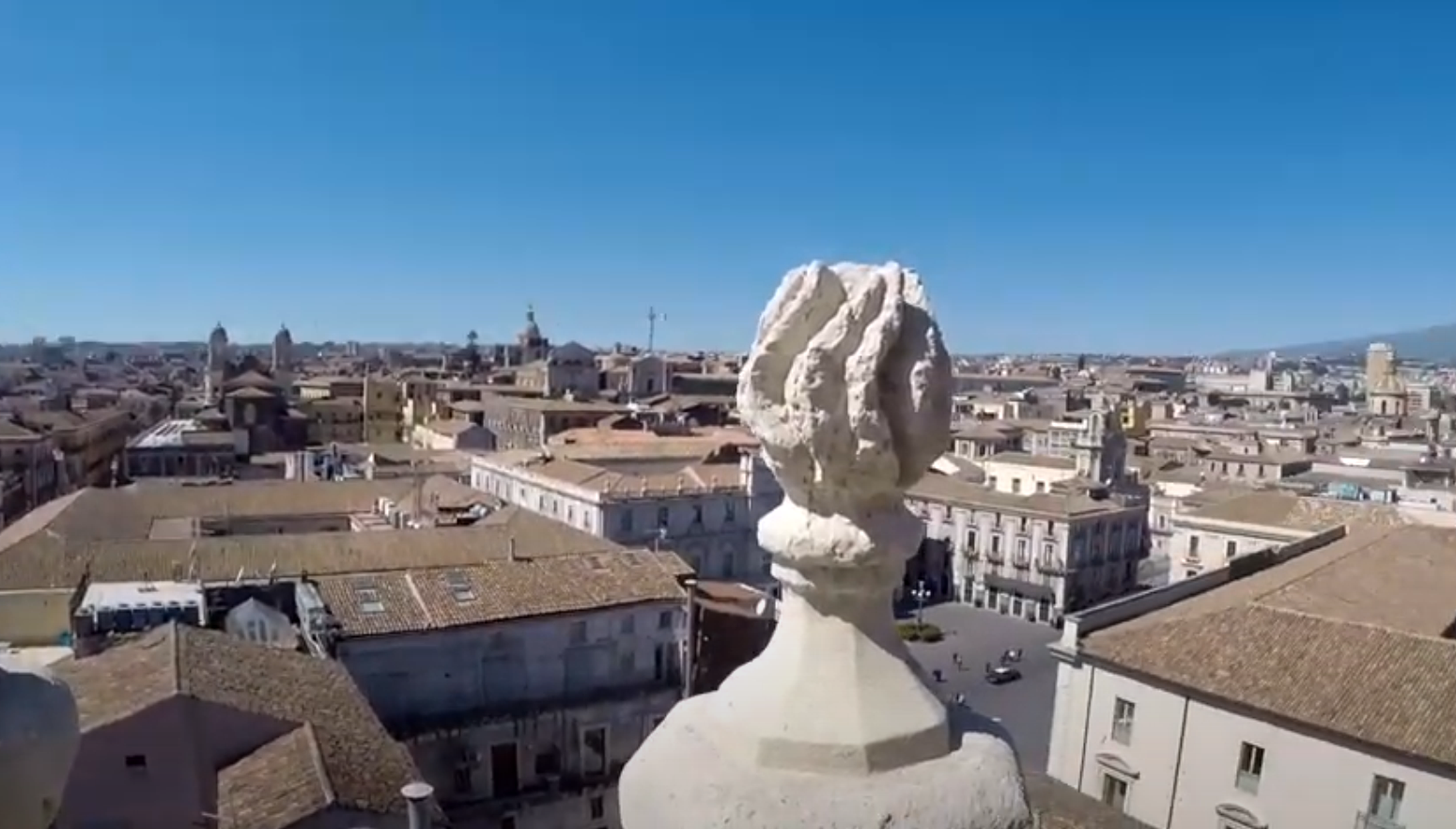
I continue with this series of articles dedicated to Linux Day a manifestation dedicated to free software that every year crosses the Italian territory from north to south and from east to west.
In 2016 (I remind you that I lived in Italy for more than 20 years) I was in the dilemma of participating in this event and had to choose the city where it was held.
For a long time I had longed to know the south of Italy, an aspect that I had always neglected since living in the center-north of Italy and having a whole nourished communication network, I preferred to know these regions of the Italian peninsula as thoroughly as possible before covering new ones. horizons.
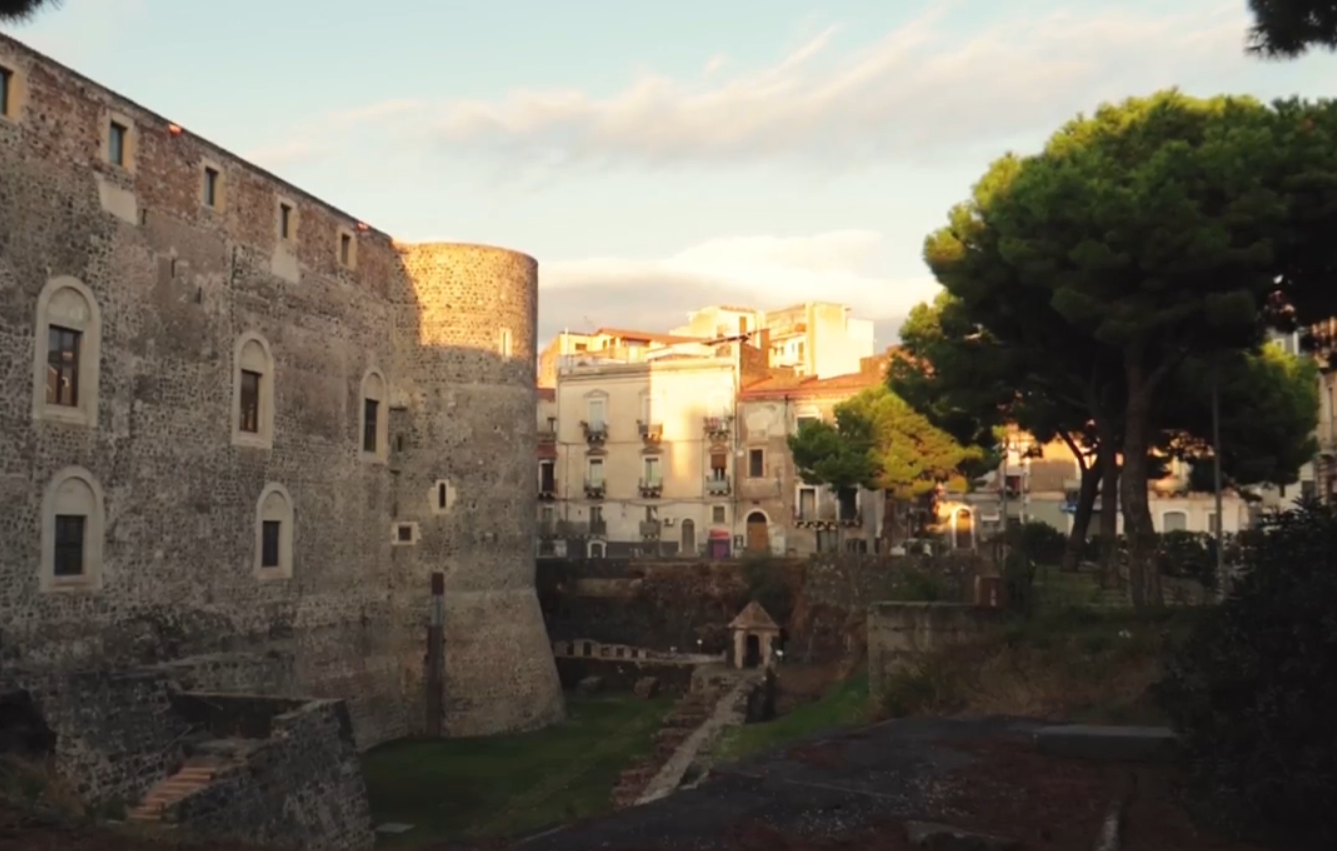
However, the prospect of getting to know a city that Italians themselves view with a bit of suspicion due to a strong mafia context that surrounds the aura of the city captivated me.
I packed my bags and got ready to travel 70% of the Italian territory from north to south.
The destination was Catania, in the heart of Sicily.
The days dedicated to free software were attractive, highlighting those dedicated as always to the History and Philosophy surrounding the Open Source movement and Free Software; a whole exhibition dedicated to Mozilla Firefox and the movements that guide the actions of the Foundation of the same name, the customary days dedicated to Office Open Source (in this case they were dedicated to LibreOffice, which at that time was taking its first steps when OpenOffice was still lucky enough to uncertain) and the application of Free Software in public schools, a topic of growing interest not only in Italy but throughout the world.
At the end of the days, I dedicated a couple of days to get to know the most salient aspects of this beautiful city, whose historic center has been declared by UNESCO as a World Heritage Site.
Here we go!.
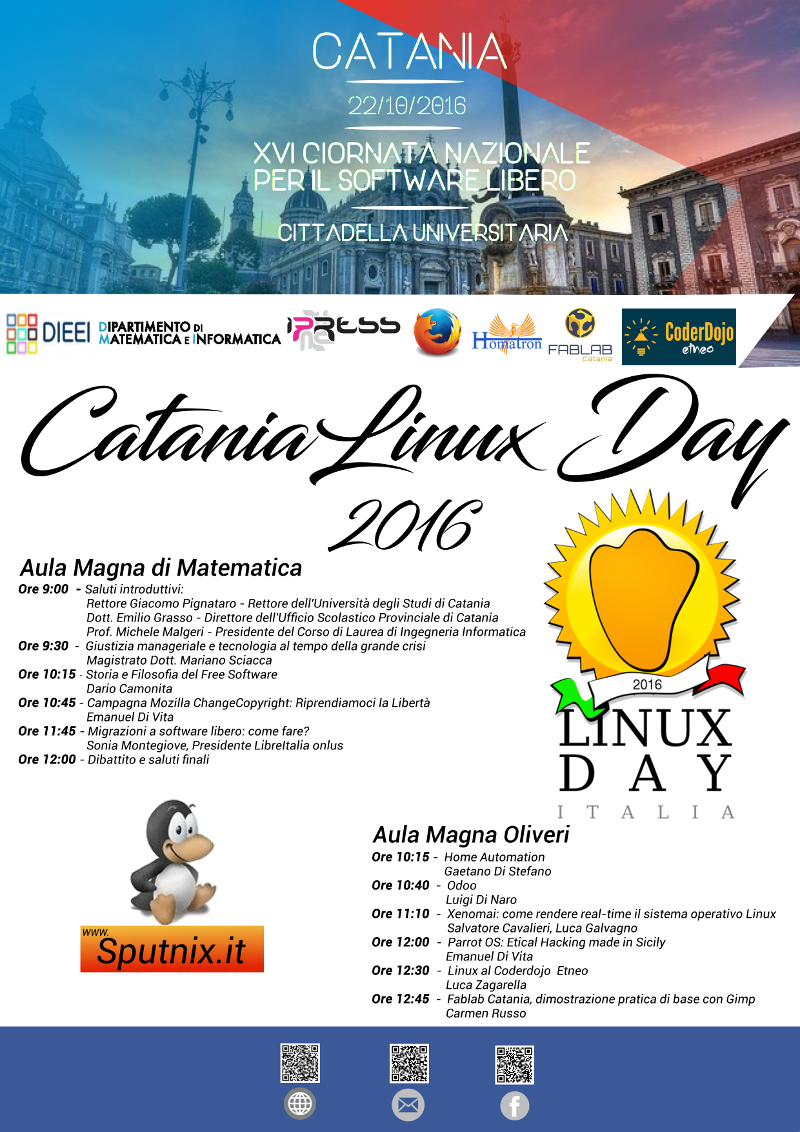
Continúo con esta serie de artículos dedicados al Linux Day una manifestación dedicada al software libre que todos los años recorre el territorio italiano de norte a sur y de este a oeste.
En el año 2016 (les recuerdo que viví en Italia por más de 20 años) se encontraba en la disyuntiva de participar en este evento y tenía que elegir la ciudad donde se celebraba.
Desde hacía tiempo ansiaba conocer el sur de Italia, un aspecto que siempre había descuidado ya que viviendo en en centro-norte de Italia y teniendo toda una nutreida red de comunicaciones prefería conocer lo más acabadamente posible estas regiones de la península itálica antes de abarcar nuevos horizontes.
Sin embargo la perspectiva de conocer una ciudad que los mismos italianos miran con un poco de recelo debido a un fuerte contexto mafioso que rodea el aura de la ciudad me cautivó.
Hice las valijas y me preparé a recorrer el 70% del territorio italiano de norte a sur.
El destino era Catania, en pleno corazón de Sicilia.
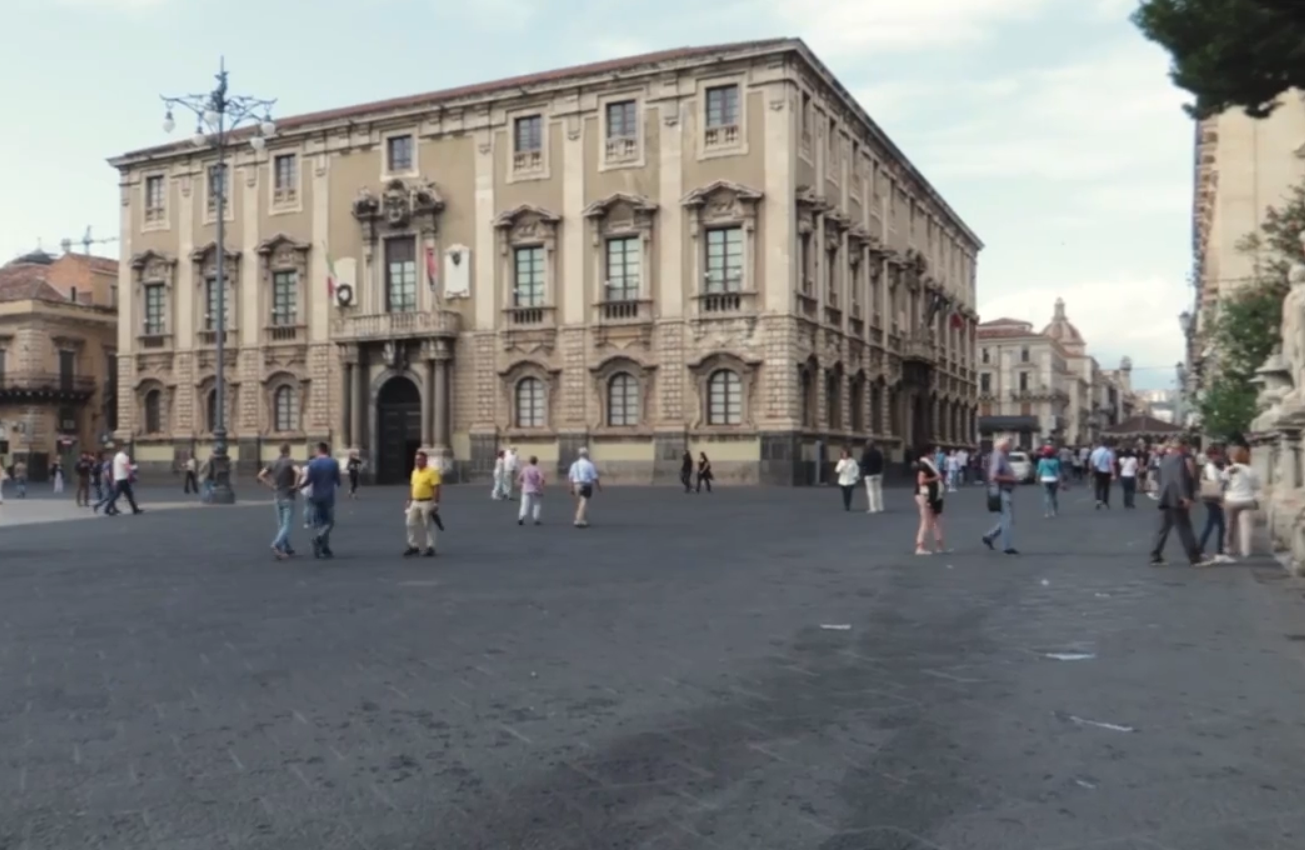
Las jornadas dedicadas al software libre fueron atractivas destacándose las dedicadas como siempre a la Historia y la Filosofía que rodea el movimiento Open Source y el Free Software; una entera exposición dedicada a Mozilla Firefox y los movimientos que guian el accionar de la Fundación homónima, las acostumbradas jornadas dedicadas al Office Open Source (en este caso fueron dedicadas a LibreOffice que en ese momento hacía sus primeros pasos cuando todavía la suerte de OpenOffice era incierta) y la aplicación del Software Libre en la escuela pública, un tema de creciente interés no solo en Italia sino en todo el mundo.
Terminadas las jornadas dediqué un par de días para conocer los aspectos más salientes de esta hermosa ciudad cuyo casco histórico ha sido declarado por la UNESCO como Patrimonio Mundial de la Humanidad.
Ahí vamos!.
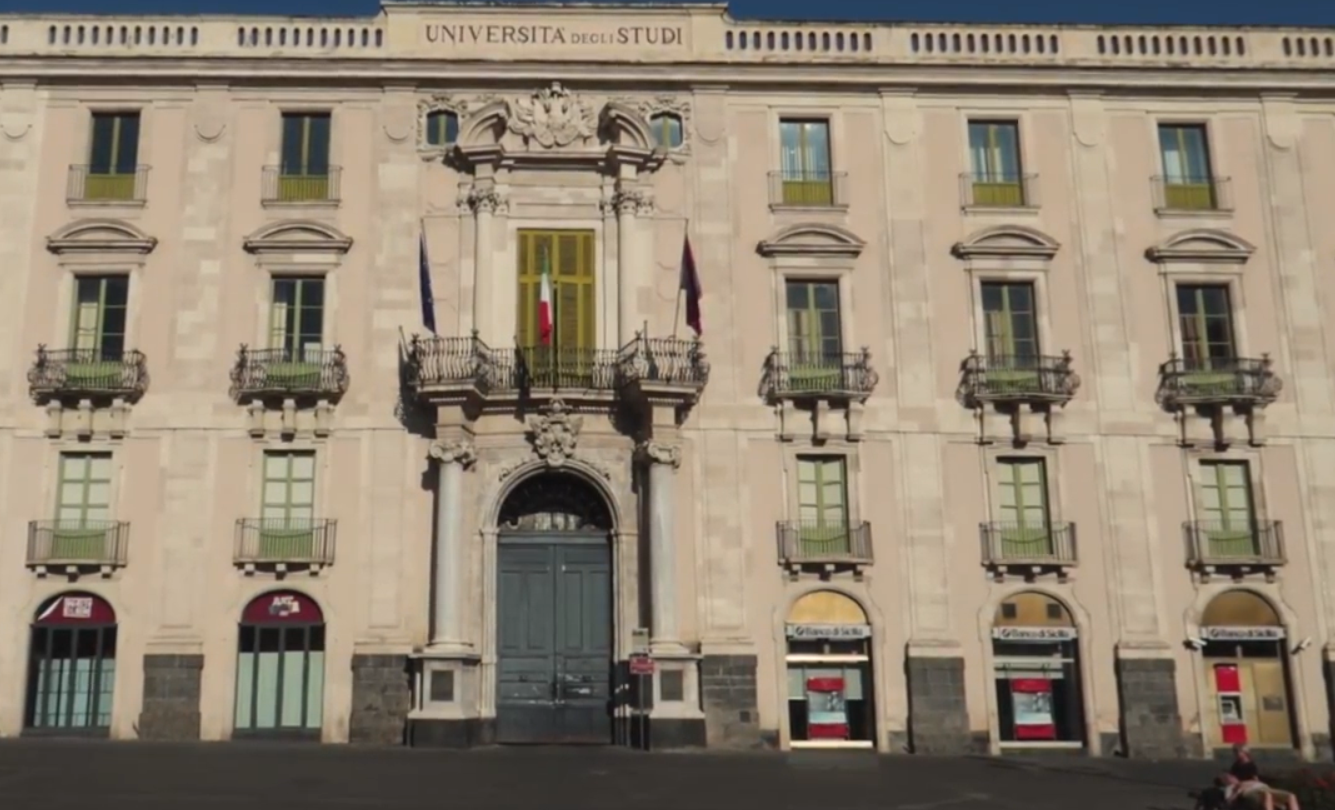
1.- The Cathedral Square. / La Plaza de la Catedral.
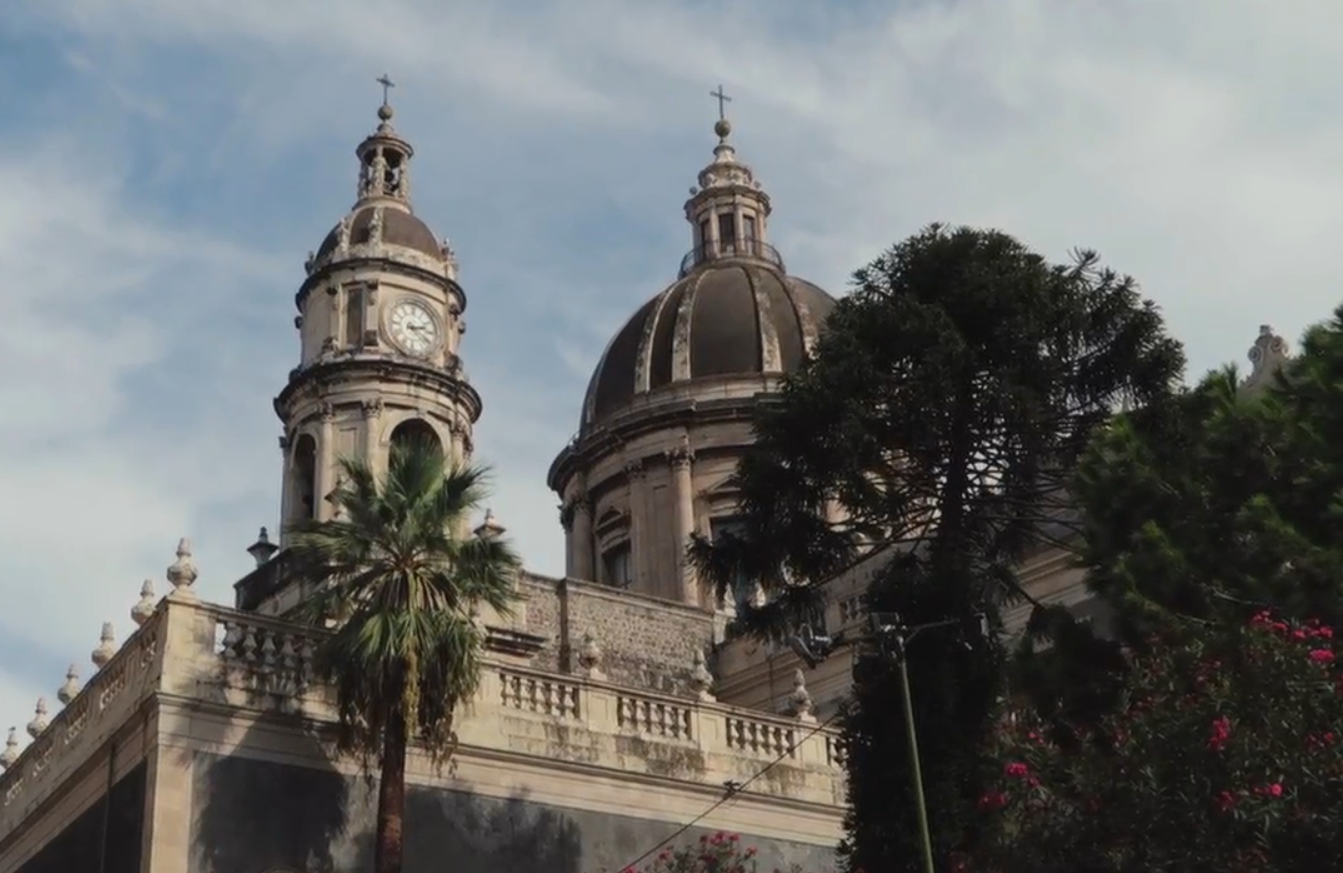
It is the main square of Catania, considered by some surveyors as the Sicilian interpretation of the "trident" of Piazza del Popolo in Rome.
The main buildings are the Palace of the Elephants and the Cathedral of Sant'Agata that gives the square its name.
The center is dominated by the famous Elephant Fountain.
The symbolism of the elephant is the subject of many legends. But apart from this, reality indicates that it was probably the object of oriental rites in ancient times when it was under Saracen rule.
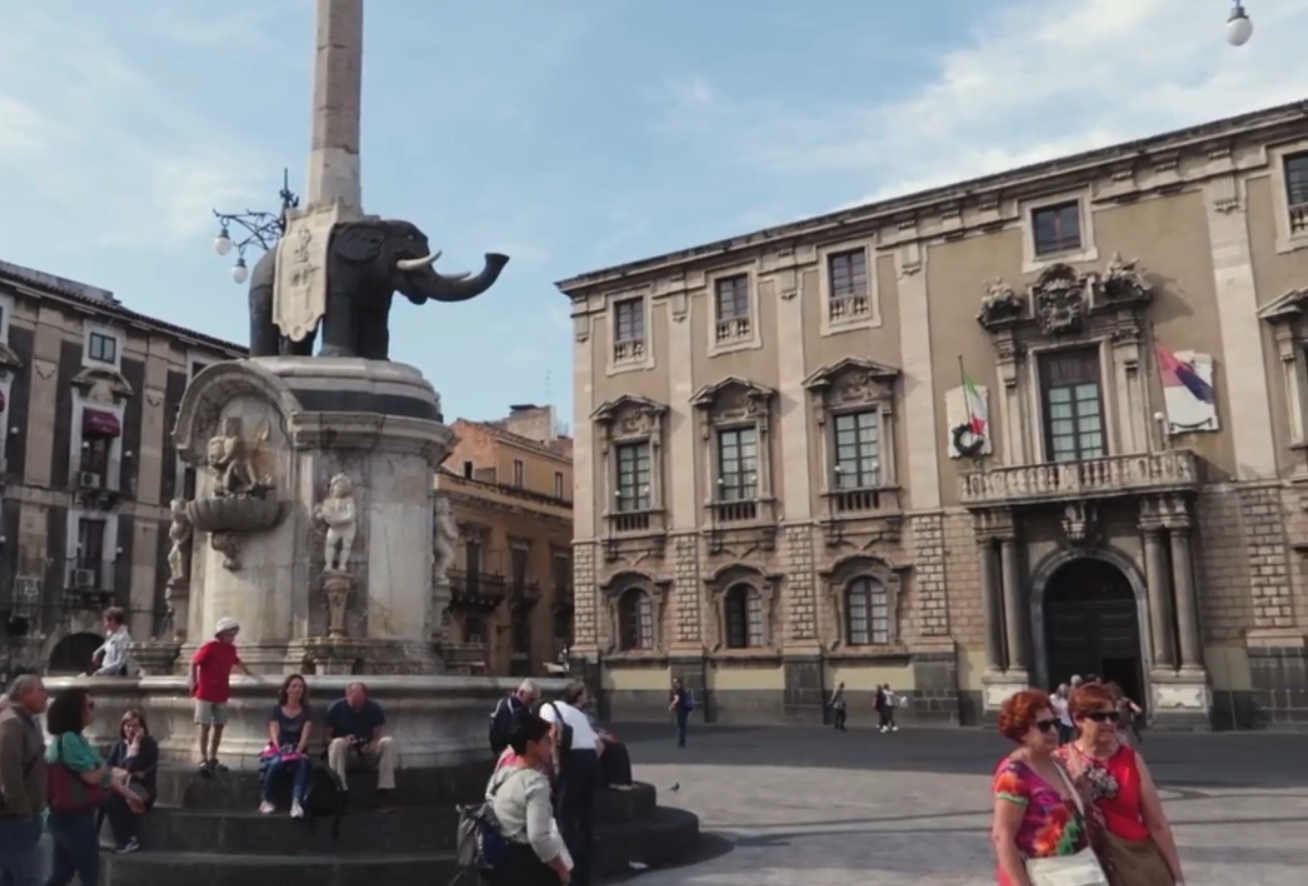
Es la plaza principal de Catania, considerada por algunos topógrafos como la interpretación siciliana del "tridente" de la Piazza del Popolo en Roma.
Los principales edificios son el Palacio de los Elefantes y la Catedral de Sant'Agata que da el nombre a la plaza.
El centro está dominado por la famosa fuente de los elefantes
El simbolismo del elefante es motivo de muchas leyendas. Pero aparte de ello la realidad indica que probablemente fuera objeto de ritos orientales en la antigüedad cuando estaba bajo el dominio saraceno.
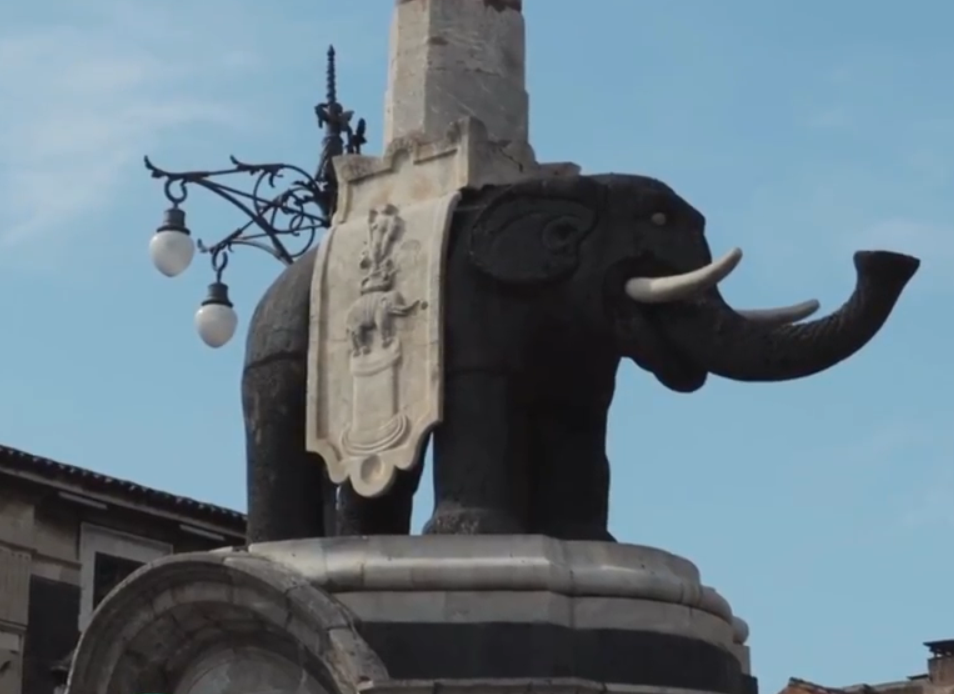
2.- Urzino Castle. / Castillo Urzino.

Urzino Castle is a 13th century castle built by King Frederick II of Sicily, considered, at the time, as an impregnable fortress.
Nowadays it houses the Museum of the city of Etna. The objects found inside represent the various influences that Sicily has had throughout its history.
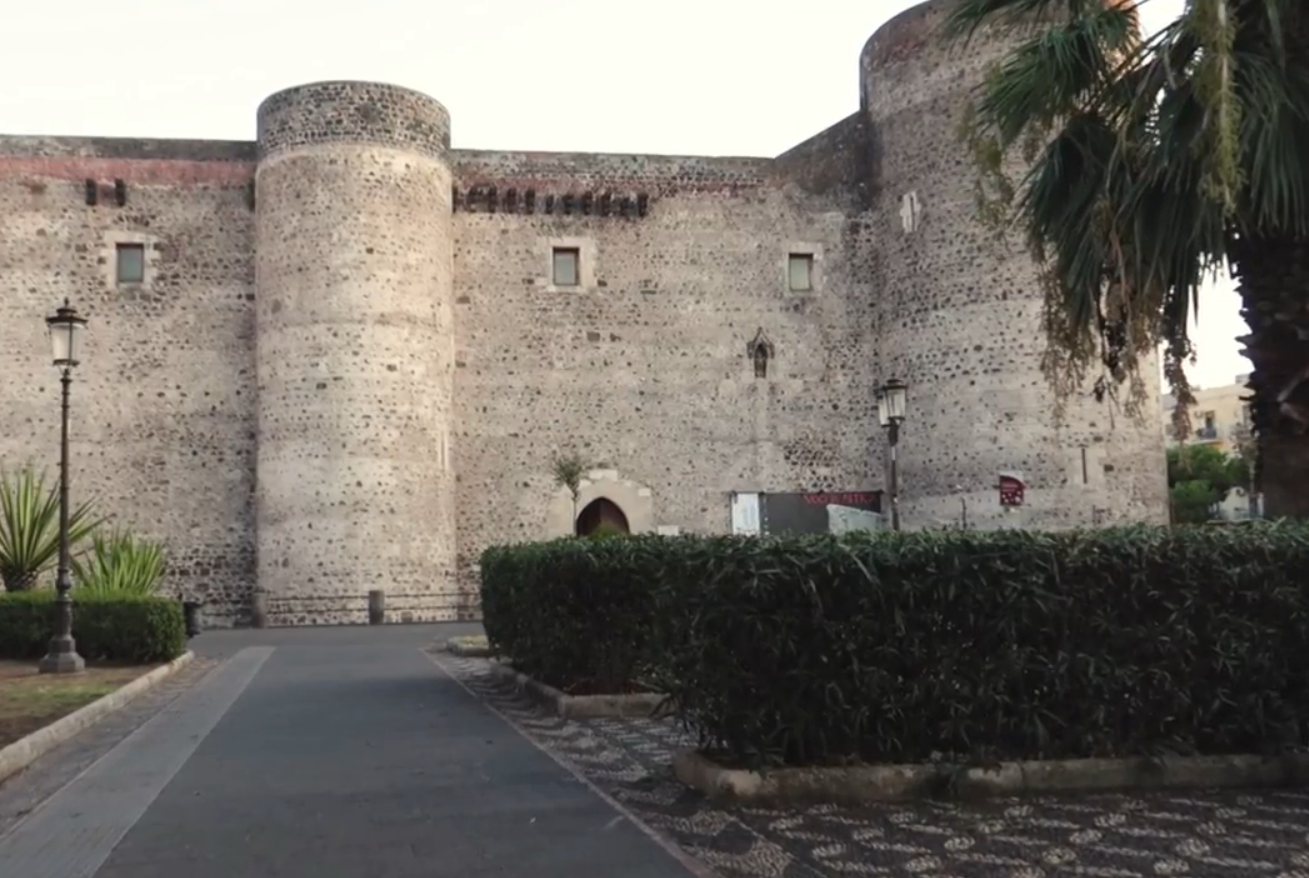
El Castillo Urzino es un castillo del siglo XIII construído por el rey Federico II de Sicilia considerado, en su momento, como una fortaleza inexpugnable.
En la actualidad alberga el Museo de la ciudad de Etna.Los objetos que se encuentran en su interior, representan las diversas influencias que ha tenidp Sicilia a lo largo de toda su historia.
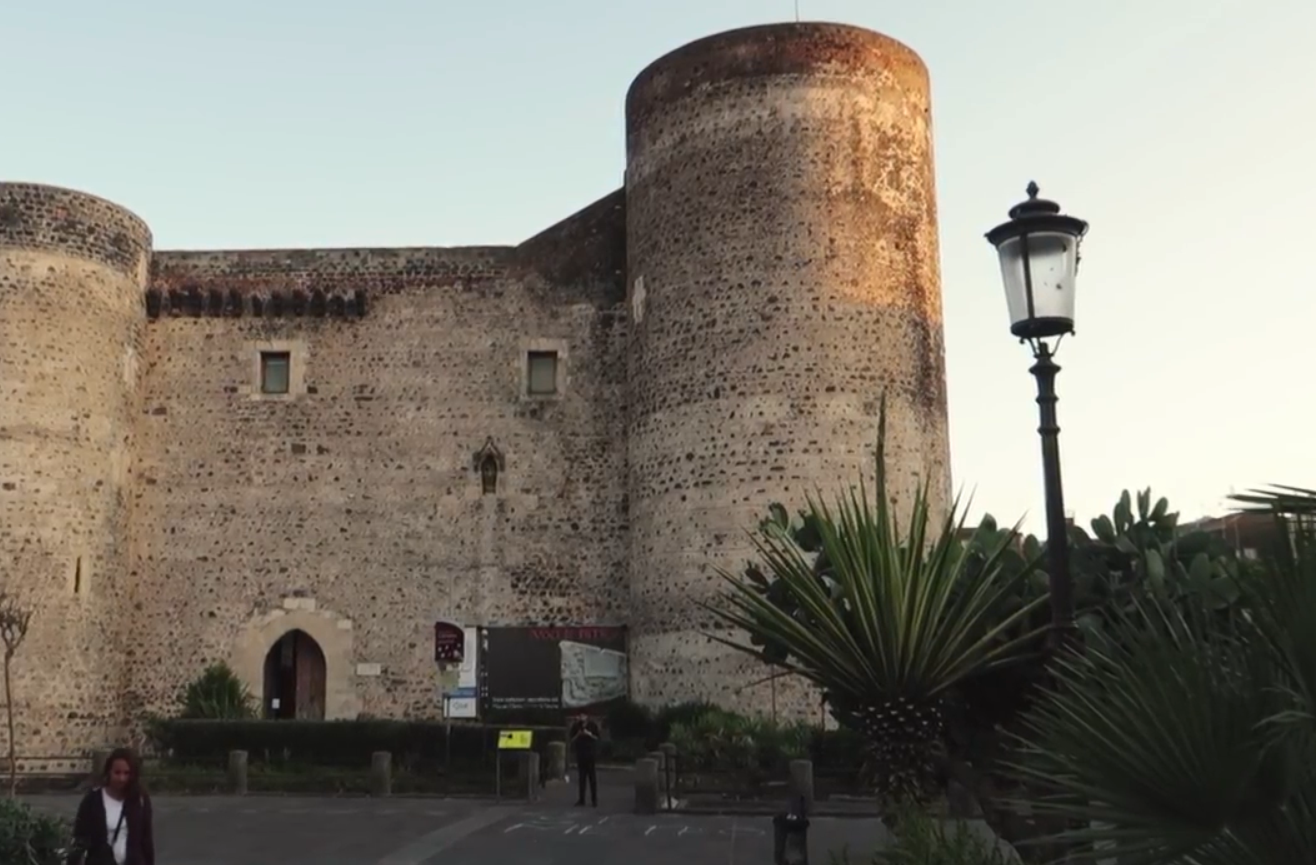
3.- Bellini Theater. / Teatro Bellini.
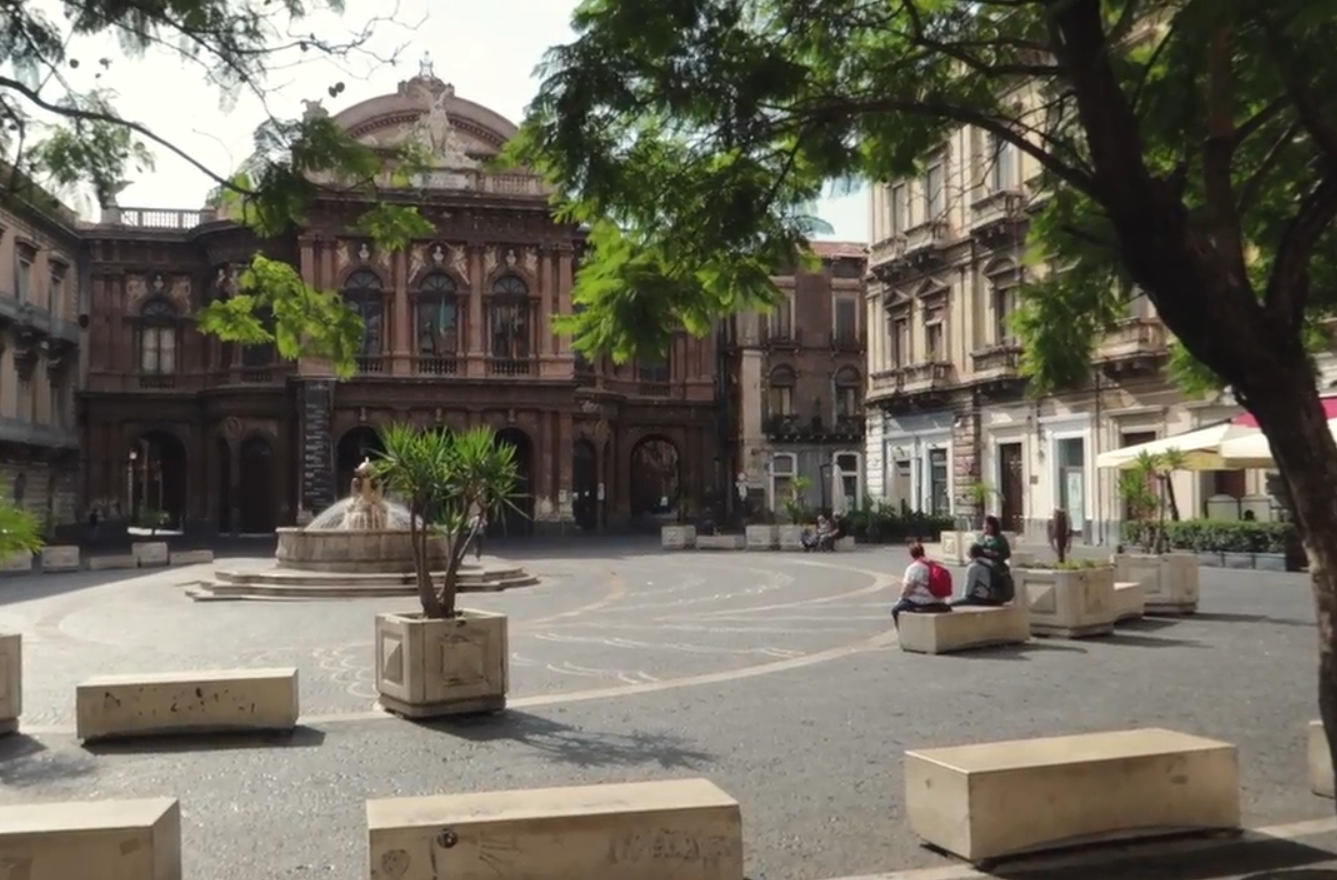
Its name is in honor of the native composer of that city Vincenzo Bellini.
The idea of building the national theater in the 16th century, but the cornerstone was only laid at the beginning of the 18th century.
Various bureaucratic and funding problems prevented the continuation of the works that were recently completed at the end of the 18th century.
Its inauguration took place on May 31, 1890 with the opera Norma, precisely a masterpiece by Massimo Bellini.
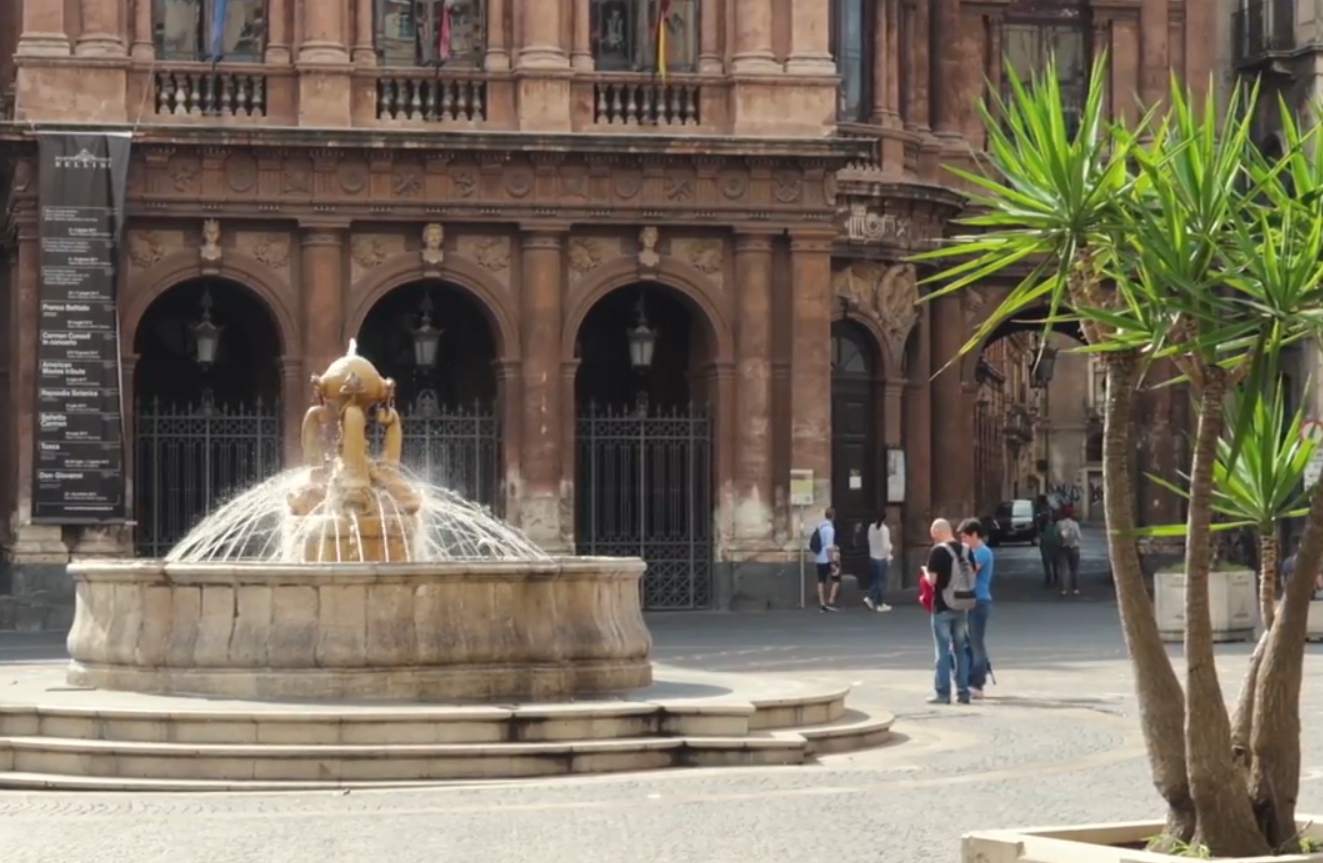
Su nombre es en honor al compositor nativo de esa ciudad Vincenzo Bellini.
La idea de construir el teatro nación en el siglo XVI pero la piedra fundamental recién se colocó a inicios del siglo XVIII.
Diversas problemas burocráticos y de fondos impidieron la prosecución de las obras que reciés se concluyeron a fines del siglo XVIII
Su inauguración se produce el 31 de mayo de 1890 con la ópera Norma, precisamente una obra maestra de Massimo Bellini.
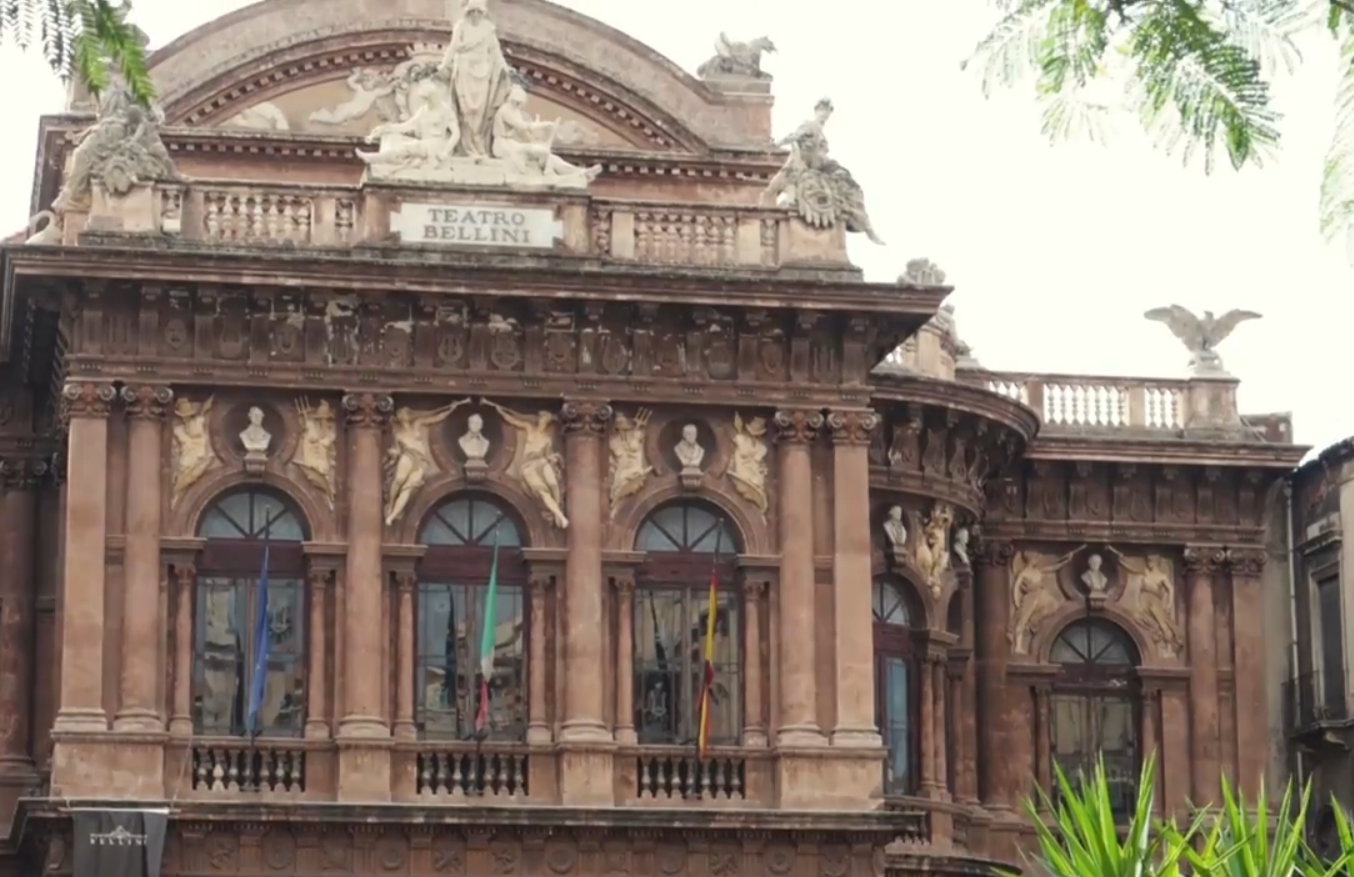
4.- Roman ruins. / Ruinas romanas.

Catania shows ancient Roman ruins in the center of a square with several buildings in lava stone. What I liked the most about Catania are its constructions of volcanic stone from Etna.
Catania was originally a Sicán settlement in the 13th century BC. C.
Then it was conquered by the Romans in 263 BC. C.
Catania shows ancient Roman ruins in the center of a square with several buildings in lava stone. What I liked the most about Catania are its constructions of volcanic stone from Etna.
Catania was originally a Sicán settlement in the 13th century BC.
Then it was conquered by the Romans in 263 BC. C.

Catania muestra antiguas ruinas romanas en el centro de una plaza con varios edificios en piedra de lava. Lo que más me gustó de Catania son sus construcciones de piedra volcánica del Etna.
Catania fue originalmente un asentamiento de Sicán en el siglo XIII a. C.
Luego fue conquistada por los romanos en el 263 a. C.
Catania muestra antiguas ruinas romanas en el centro de una plaza con varios edificios en piedra de lava. Lo que más me gustó de Catania son sus construcciones de piedra volcánica del Etna.
Catania fue originalmente un asentamiento Sicán en el siglo XIII a.C
Luego fue conquistada por los romanos en el 263 a. C.
5.- La Pescheria, the old fish market and the Plaza de las Fuentes. / La Pescheria, el antiguo mercado del pescado y la Plaza de las Fuentes.
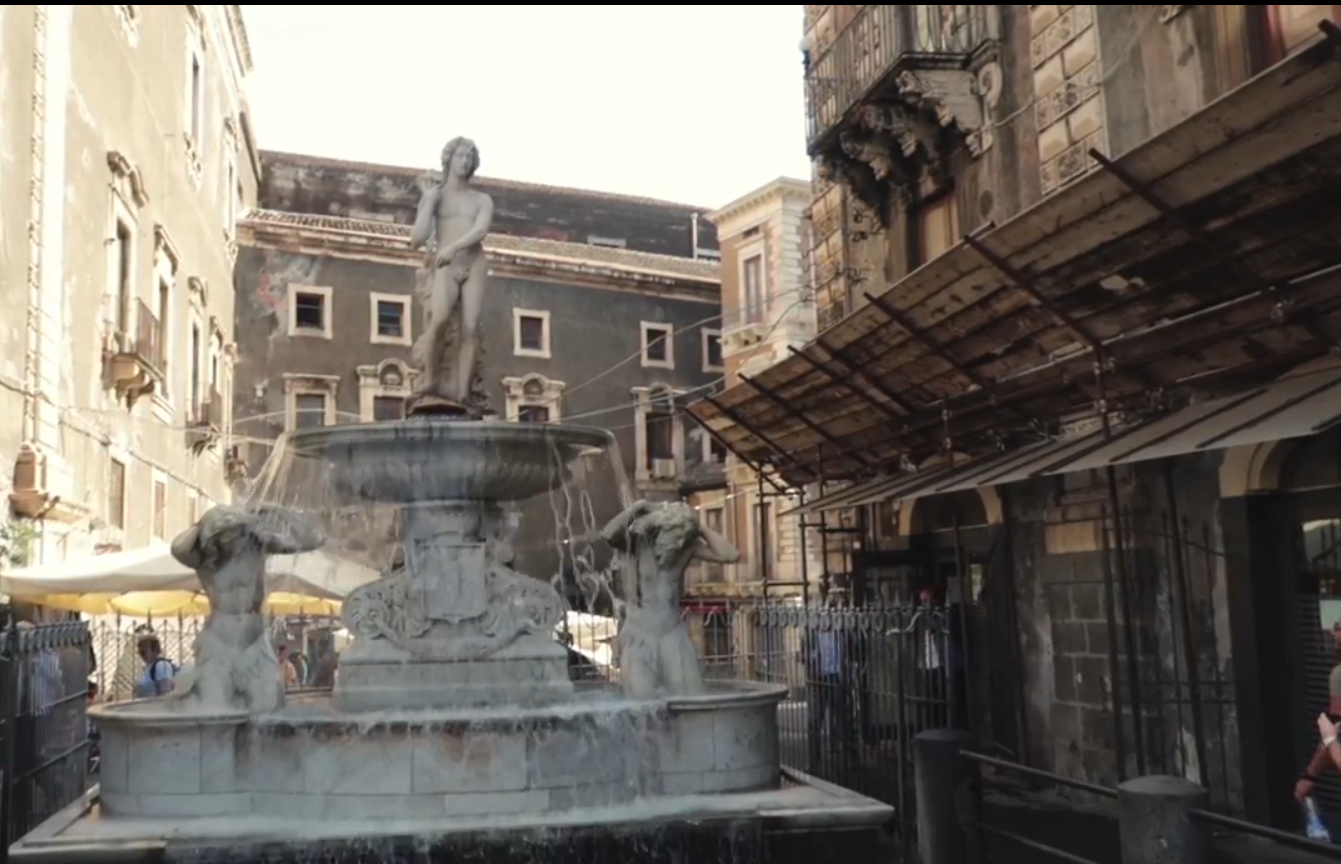
La Pescheria is the old fish market of the city of Catania, which is accessed by crossing a square with beautiful fountains and is included in the tourist route due to the folkloric content that is breathed when passing between the fishermen's stalls.
Only by trying this experience can you realize how picturesque this market can be, as you can buy fresh fish every day in the early hours of the morning.
Fishermen still use traditional boats to fish.
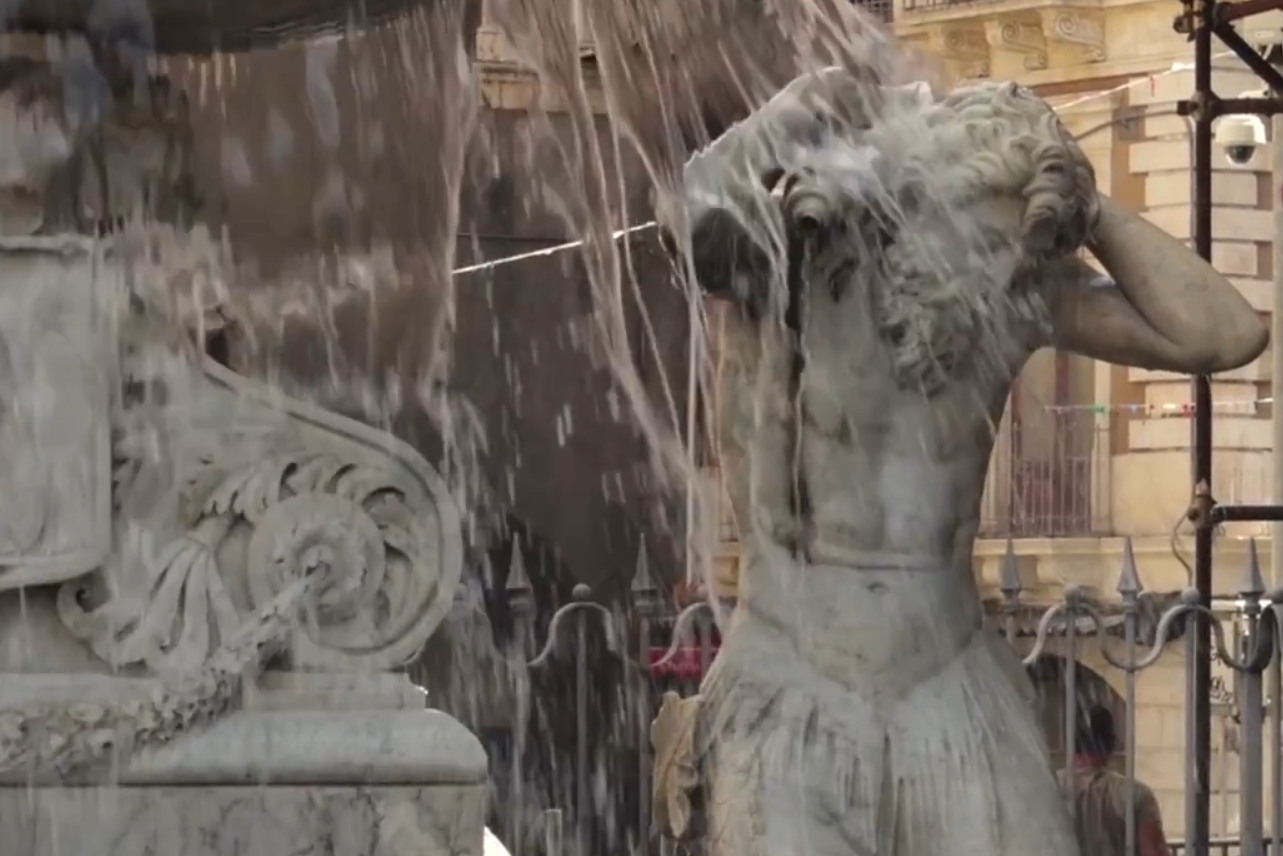
La Pescheria es el antiguo mercado del pescado de la ciudad de Catania, al cuál se accede atravesando una plaza con hermosas fuentes y está incluida en la ruta turística por el contenido folclórico que se respira al pasar entre los puestos de pescadores.
Solo probando esta experiencia puedes darte cuenta de lo pintoresco que puede ser este mercado, ya que se puede comprar pescado fresco todos los días en las primeras horas de la mañana.
Los pescadores aún usan las tradicionales barcas para pescar.
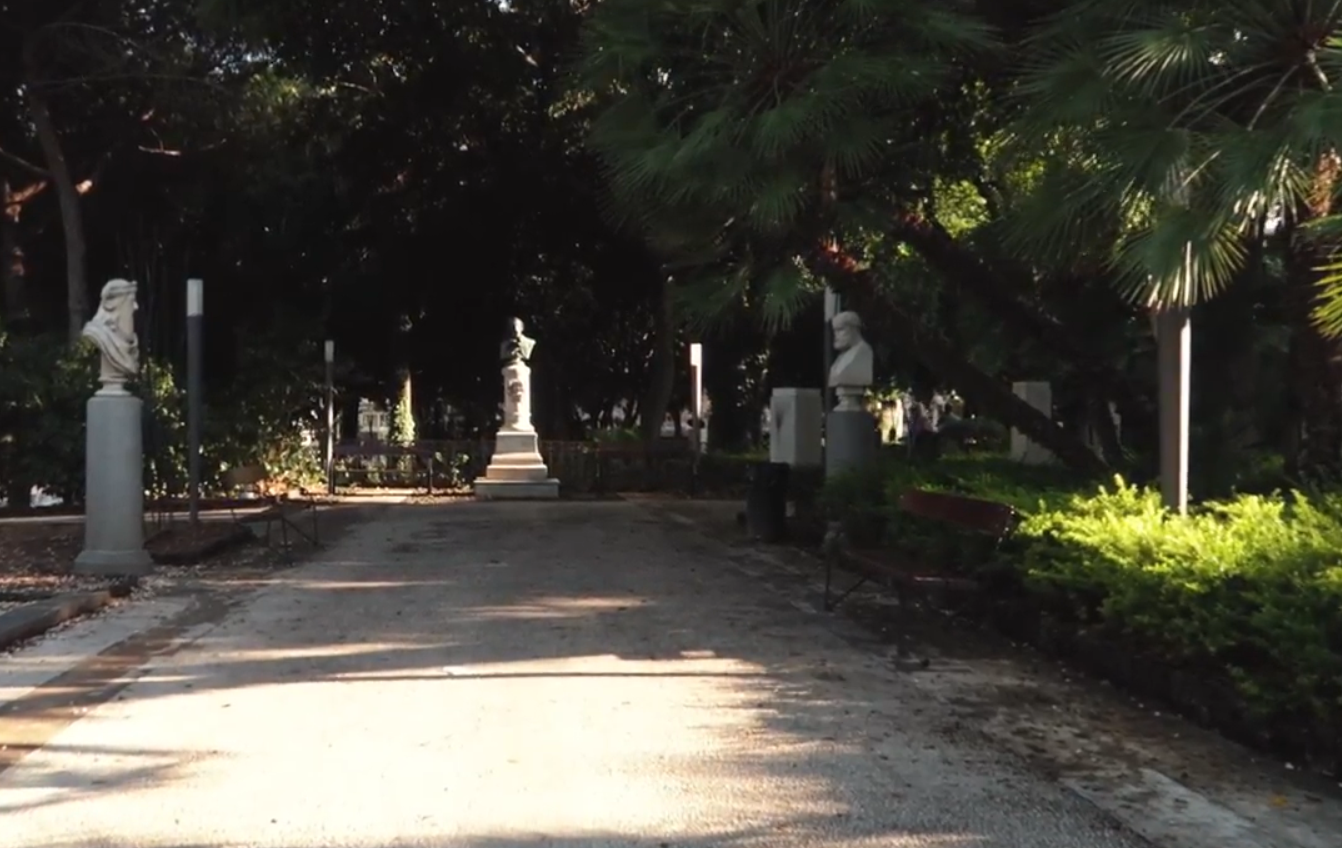


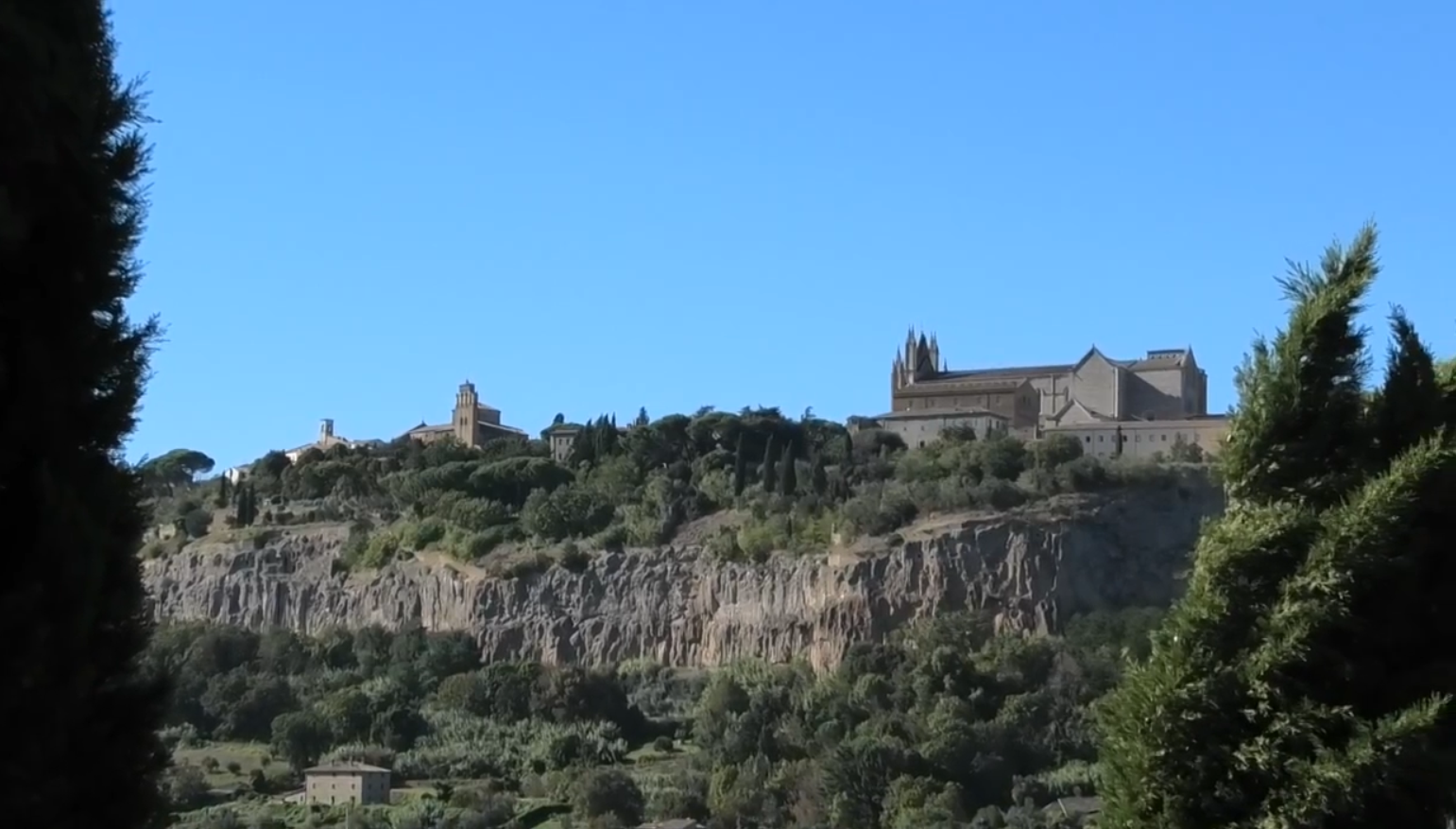
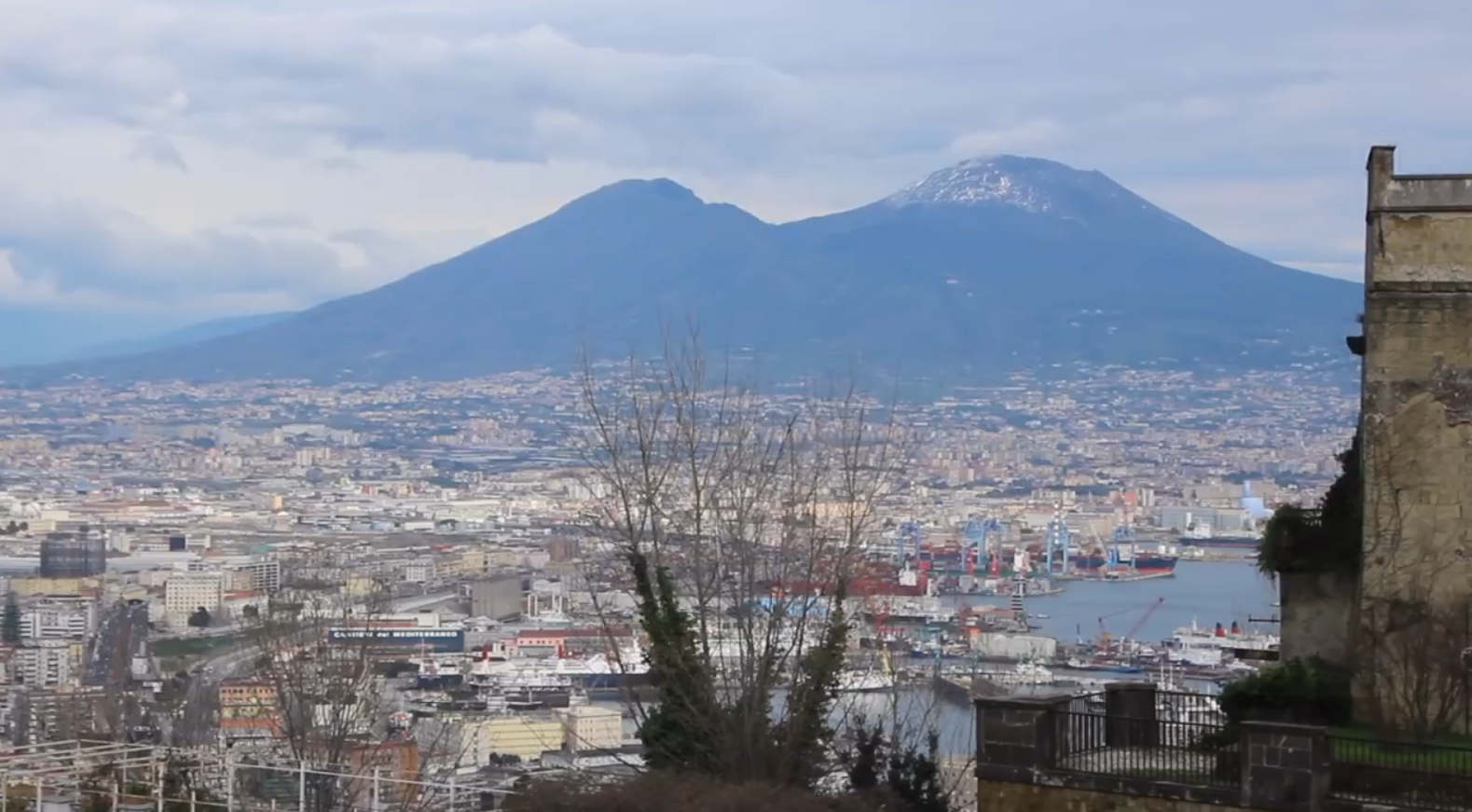
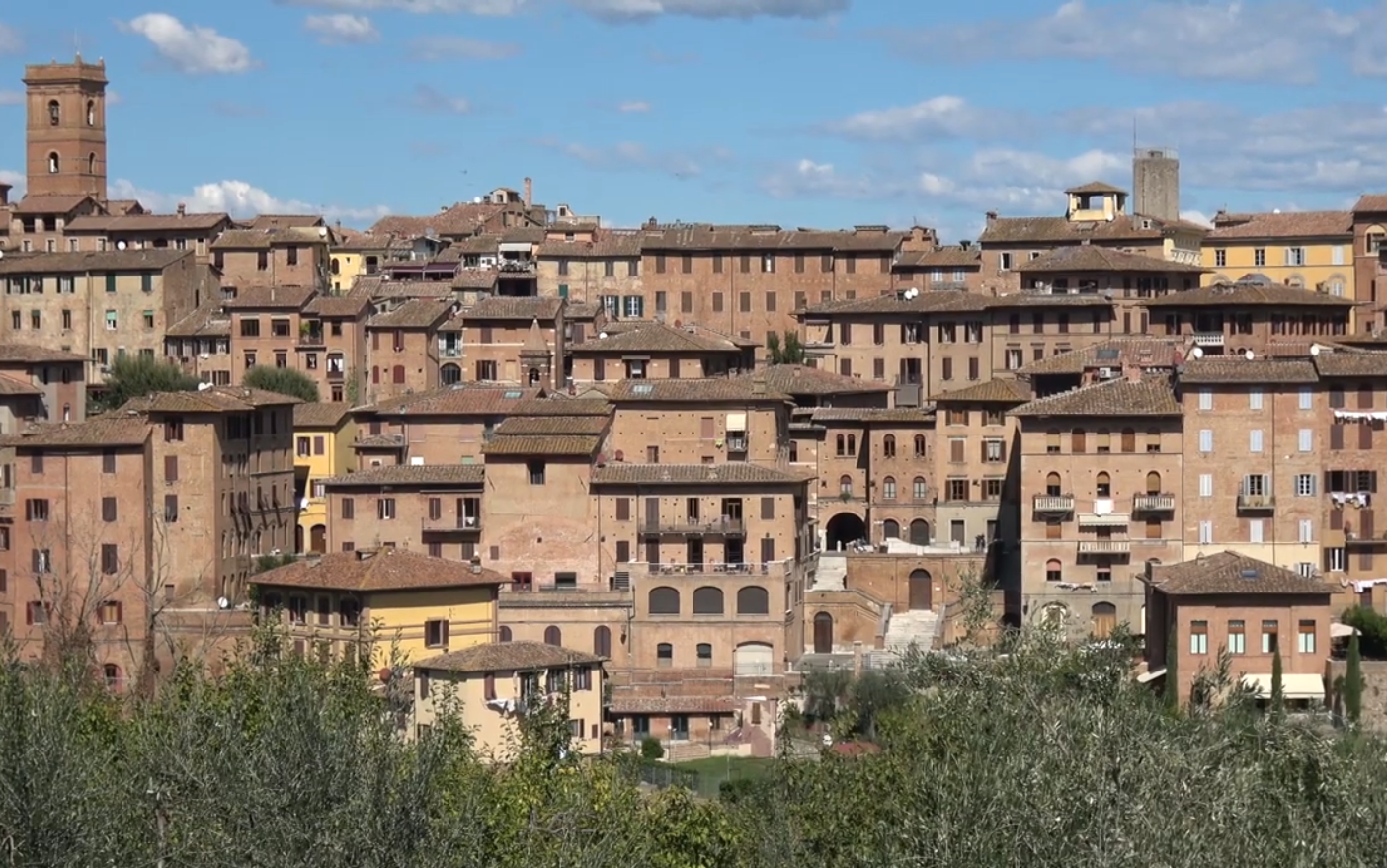
Congratulations, your post has been added to Pinmapple! 🎉🥳🍍
Did you know you have your own profile map?
And every post has their own map too!
Want to have your post on the map too?
Thanks for the continued support @pinmapple!
Congratulations @losapuntesdetux! You have completed the following achievement on the Hive blockchain and have been rewarded with new badge(s) :
You can view your badges on your board and compare yourself to others in the Ranking
If you no longer want to receive notifications, reply to this comment with the word
STOPDo not miss the last post from @hivebuzz:
Gracias por apoyar y curar mis contenidos @hivebuzz.
Tengo una pregunta para @arcange que es quien se ocupa de badgets y demás bellezas que ilustran el perfil y el banner de la portada de cada usuario.
Por que el RC (o que se llame técnicamente) es decir el número que figura entre paréntesis al lado de nuestro nombre en el banner principal del perfil de la portada cambia bruscamente cuando deberia permanecer fijo e igual al que figura al lado de cada post.
En la imagen se ve claramente. Mi RC es 59 y no 46. Antes el sistema era distinto me parece. Ambos números eran iguales. O es así porque se está recargando?
No recuerdo haber visto anteriormente esta situación.
Saludos.
Hiya, @choogirl here, just swinging by to let you know that this post made it into our Honorable Mentions in Daily Travel Digest #1062.
Your post has been manually curated by the @pinmapple team. If you like what we're doing, please drop by to check out all the rest of today's great posts and consider supporting other authors like yourself and us so we can keep the project going!
Become part of our travel community:
Thanks for the support and the mention received @choogirl!
@tipu curate 2
Upvoted 👌 (Mana: 45/150) Liquid rewards.
Thanks for curating my content @tipu!
Thanks for curating my content @magicmonk.
Gracias por apoyar mis contenidos @goya!